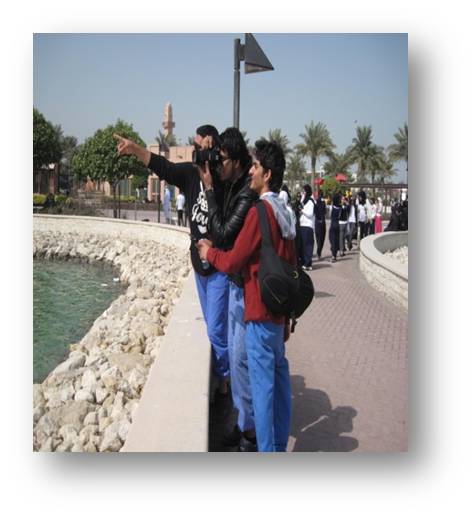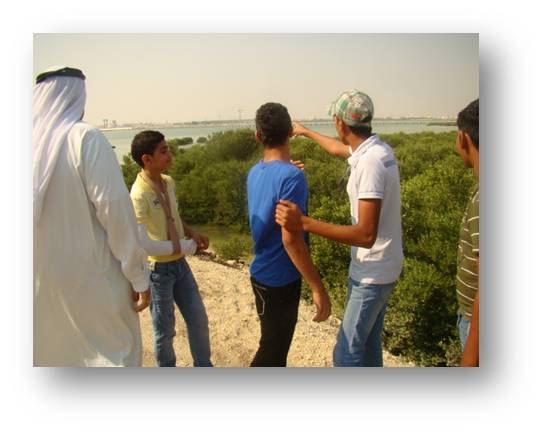This week’s blog comes to us from Ms. Wafa Bin Daynna, the Country Coordinator for the Kingdom of Bahrain. In this post she explains a new collaborative project occurring in the Kingdom of Bahrain exploring migratory birds throughout the country. This project was introduced in the 2011-2012 academic year and will continue for the three academic years following.
In the Kingdom of Bahrain, over 290 species of birds have been observed, the majority being passing migrants. Monitoring migratory birds isn’t always easy, as many migratory birds fly at a great height, making them hard to see. Some birds, such as cuckoos (family: Cuculidae) and orioles (family: Oriolidae), migrate during the night. There are others which migrate during the day, such as hoop (family: Upupidae), swallows (family: Hirundinidae), pipits and wagtails (family: Motacillidae), and larks (family: Alaudidae).
In addition to these land birds, wader birds are also observed in the Kingdom of Bahrain. Wader birds are birds that are characterized by their long legs and like to frequent shallow waters in search of food. These types of birds are best seen during the low tide. The Socotra Cormorant (Phalacrocorax nigrogularis), for example, is a wader bird that is commonly found during migratory season in the Kingdom of Bahrain.
Regardless of the species of migratory bird, the area near Muhrraq and south of the airport are considered great areas for migratory bird monitoring. Additionally, the eastern coast of the Kingdom of Bahrain, such as along the Bay of Tubli and Arad, as well as coasts of Ghalalee and Amwaj, are other areas that many of these migratory bird species can be found.
With the wealth of bird species observed in the Kingdom of Bahrain, The GLOBE Centre for Earth Sciences and Renewable Energy, in Collaboration with the University of Bahrain scientists, has been preparing a study on wading and migratory bird overflow in the country. This project aims to expand students’ knowledge of scientific research and introduce them to the local bird species of their environment. Furthermore, it is anticipated that through this project and through the use of GLOBE protocols and the collection of data, students will become more environmentally aware while at the same time learning the skills necessary to perform scientific research. Students from 13 secondary schools and 8 intermediate schools will monitor bird migration throughout the Kingdom of Bahrain and learn to work together to achieve a common goal.

To reach the goal of the project, students will identify their local migratory birds and observe how they adapt to the local environment. The students will then statistically analyze the specific types and numbers of birds, allowing them to hone their bird classification skills. By analyzing bird observations in addition to other GLOBE protocols, students will be able to: identify the possible effects of climate change on the environment for the migratory birds; be able to identify endangered birds and suggest ways to protect them; and come away with an understanding of the human impact on birds and how to prevent further species loss.
Suggested activity: Have you ever considered observing when certain migratory bird species arrive and depart your area? Phenological projects such as this from the Kingdom of Bahrain can be repeated in your local area. Investigate migratory patterns of species you are familiar with and begin making observations of not only the arrival and departure of the birds but also environmental conditions, such as air, soil or surface temperature, budding of trees and flowers, etc. Collecting data can help you see if there might be a connection. The GLOBE Program offers students the opportunity to collect bird migration data through the following protocols, Arctic Bird Migration and Operation Ruby Throat: The Hummingbird Project, as well as the Phenology and Climate Intensive Observing Period.








I´m from Peru and I want to know what can I do in your projects to investigate about local birds like the Condor
can you consider it?
Thanks
Greetings Santiago! Send us an email at science@globe.gov and we can discuss how you can investigate local birds.
Nice Article, I am very like bird. a migration bird is very beautiful if we take a picture..
I love your pictures ! Congratulations I love birds too !